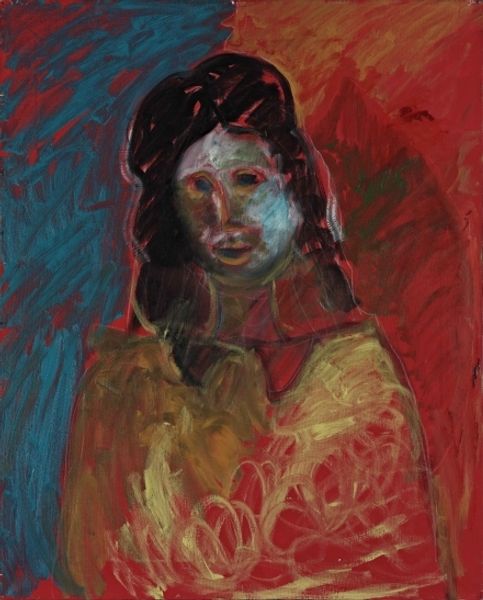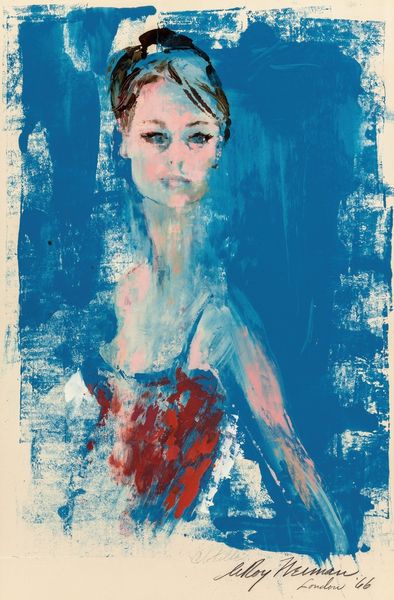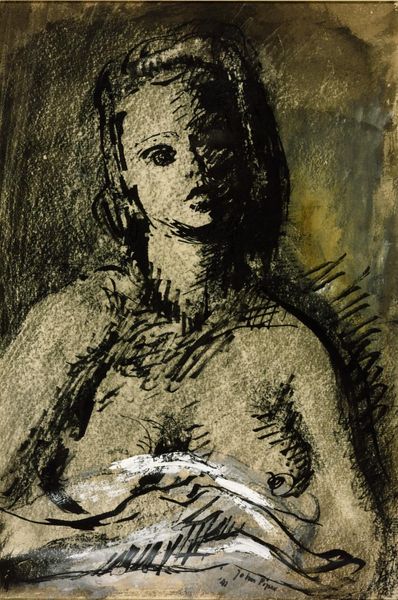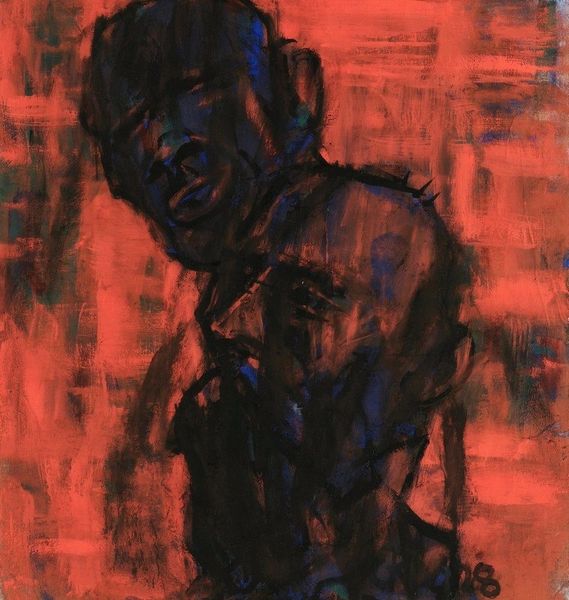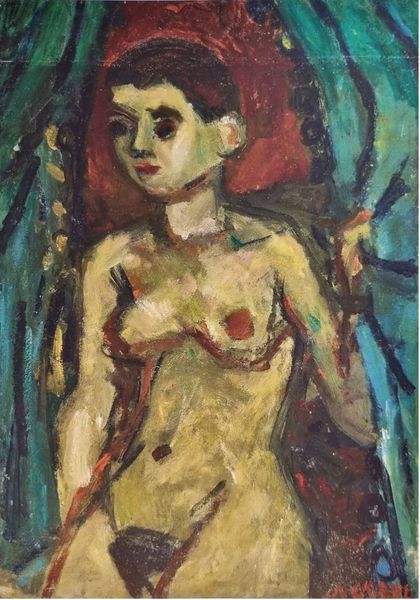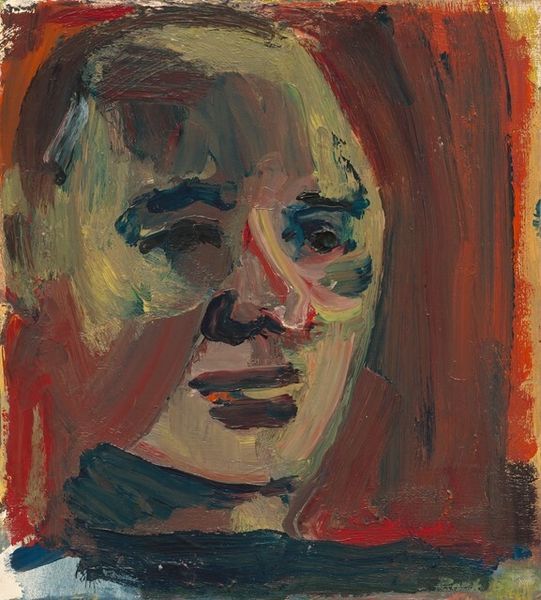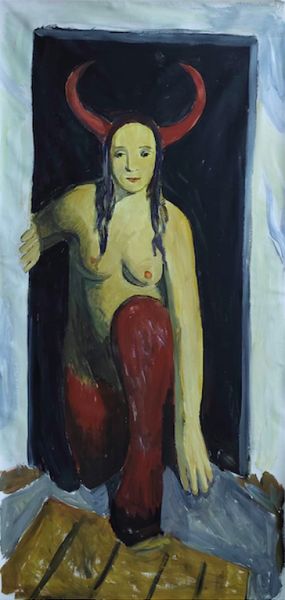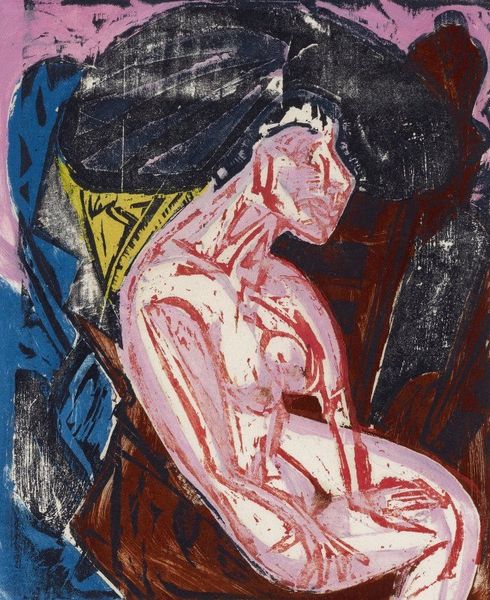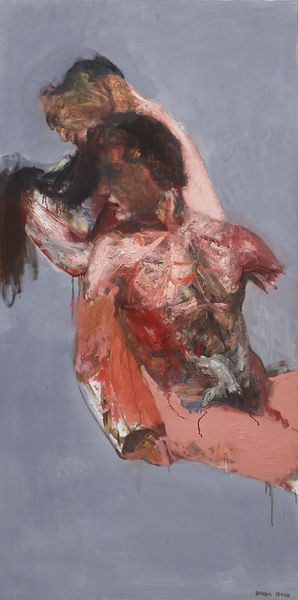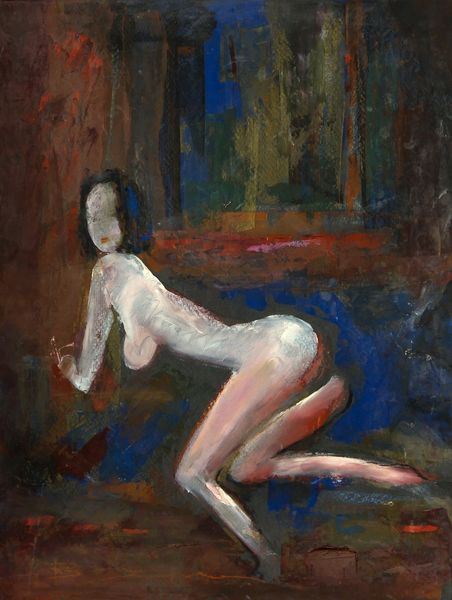
Copyright: Tano Festa,Fair Use
Curator: Well, here we have "Entreneuse," a 1983 oil painting by Tano Festa, a work that firmly situates itself within the Neo-Expressionist movement. Editor: My first impression? A visceral sense of vulnerability, the rawness practically vibrates off the canvas. The figure seems almost unfinished, like a fleeting memory struggling to solidify. Curator: Indeed. Festa’s engagement with Neo-Expressionism marks a departure from the strictly conceptual approaches dominating art at the time, with painting acting almost as an escape. Think of its socio-political context in the 80s - a response to prevailing postmodern irony through direct emotion. Editor: That blue, it’s not just a backdrop; it feels like a psychic weight, a burden maybe. Contrasted by the crimson smear that’s hard to read... passion? Or threat? Either way, the colours really embody inner struggle. Do you see anything of classical mythology bleeding through the modern aesthetic here? Curator: That's fascinating! I agree, the loose figuration is evocative and aligns neatly with broader Postmodern dialogues questioning originality and historical narratives. But Neo-Expressionism also aimed for public appeal, moving away from elitist abstraction towards forms people readily recognized. Editor: But see how he avoids making eye contact? This almost ritualistic downcast gaze makes her not fully accessible, imbuing the piece with mystery, a kind of modern melancholic goddess. We still decode expressions of pain, alienation; she is carrying centuries of iconography of the downtrodden, the outsider. Curator: Yes, that speaks volumes, because at this time galleries became significant players, championing works with recognizable imagery. These figures became stand-ins for human emotions. Tano Festa managed to work in popular forms whilst still addressing deep psychological experience. Editor: To consider, then, how his Neo-Expressionism connects us both to current realities and ancient understanding about humanity is crucial here! It really does make one question progress itself, given the constant recurrence of these motifs of pain throughout art. Curator: Absolutely. The piece serves as a potent reminder of art’s capacity not just to reflect our present but also to echo our shared past—and challenge gallery walls at the same time.
Comments
No comments
Be the first to comment and join the conversation on the ultimate creative platform.
